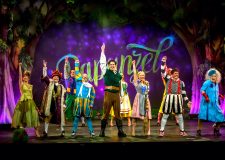AK Soufflé: Queer British Art

Duncan Grant Bathing 1911 Tate
So it’s 50 years since the decriminalisation of homosexual acts in private and in celebration Tate Britain has mounted a huge retrospective exhibition of “queer” art. It’s an extraordinary show, fascinating in so many ways, provocative and challenging too.
The works shown span from 1861 to 1967 and range in content from playful and wistful to erotic and violent. As much as sexual desire it also encompasses gender preference and in fact gender fluidity, two words that crop up in the excellent and extensive captioning that makes the exhibition so fascinating.
The earlier works shown are broad in range, drawings and paintings sitting side by side with photographs, printed ephemera and objects, including the door to Oscar Wilde’s Reading Gaol cell. Images that are familiar are placed in historical and social context with great skill, revealing not only the clandestine nature of so much of our LGBTQ+ past but also the rise of militancy and coming out. The works are not obviously “erotic”, except perhaps for a group of drawings by Bloomsbury artist and Sussex resident Duncan Grant where clearly there is a sexuality to his male studies.
Revealing not only the clandestine nature of so much of our LGBTQ+ past but also the rise of militancy
There is also a fascinating parallel in the early classical images like William Blake Richmond’s The Bowlers and David Hockney’s interest in the male form as portrayed in “beefcake” magazines. It was also good to see a reasonably balanced representation of make and female artists and writers, and wonderful to see a grouping of images of Joe Orton with the defaced library book covers that he created with his lover and murderer Kenneth Halliwell.
In contrast I visited the major David Hockney retrospective later that day. It is an extraordinary collection spanning his entire creative life, from schoolboy drawings to his current works in video. There are in the early works far more explicit ideas and indeed images than you might see down in the Queer art exhibit, but they are not as easy to embrace as his mass popularity means that the show is rammed with viewers to the sad detriment of the experience.
Tate Britain until 1 October, tate.org.uk




















